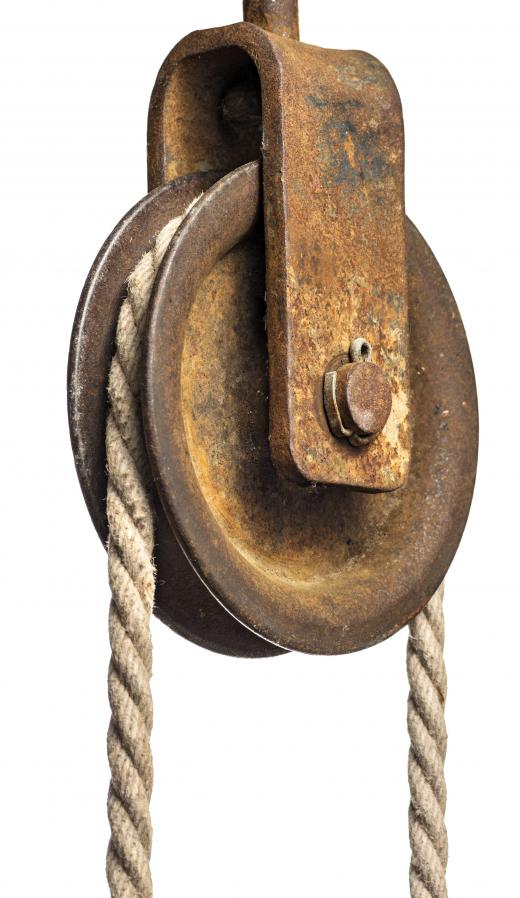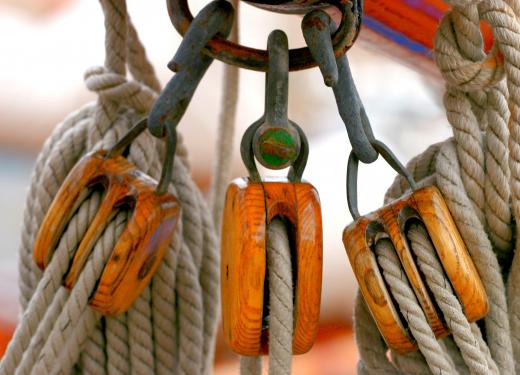A pulley bracket attaches a pulley wheel to a wall or ceiling. There are three types of basic pulley bracket: those that are eye-, side- and top-mounted. They are used to give the pulley support and structure while giving the pulley enough freedom and weightlessness to operate without reducing the amount of energy it can transfer to the job being done. This makes the bracket a crucial element of the whole pulley system.
The pulley system is one of mankind’s earliest machines. It is also considered one of the most simplistic. The word pulley is derived from the Greek word ‘polidia,’ meaning ‘little pivot.’ They are used to reduce the amount of energy required to lift or move an object. Pulley arrangements often leave one pulley wheel above another, whether directly vertical or more horizontal; this often requires different kinds of pulley bracket to accomplish.

There are four types of pulley belt and several types of pulley wheel. Each type can vary in size and length, depending on the job being done. The four types of belt are fabric, chain, cable and rope. Some types of pulley wheel, like grooved and pitch wheels, can use any of the types of belt. Variable-speed pulleys, on the other hand, only work with chain belts.

Pulleys work by reducing the amount of force required to do a certain task. This is achieved by giving one or more pulleys a sense of weightlessness to reduce friction. The object being moved is then attached to the belt at one end, with the other end being controlled by the operator. The belt is fed through the pulley, which takes the strain and reduces energy requirements.
An eye-mount pulley bracket tends to hang from the ceiling, but can also be attached to a wall. A hook is hung from the ceiling or wall, and a metal loop attached to the pulley wheel is hooked onto the eye mount. The eye mount offers more flexibility, and it is easy to detach and remove the pulley wheel if necessary. The down side is that it lacks stability.
The side-mount pulley bracket is attached to the wall. This gives it strength and stability, but it has less flexibility of movement for the pulley wheel. Due to the restrictions of being on a wall, the pulley is limited to facing forwards or backward along the wall.
Ceiling or top mounts offer flexibility in terms of which direction the pulley wheel can face. It also offers the strength and stability of the side mount. It is fixed in place and, like the side mount, harder to detach.
